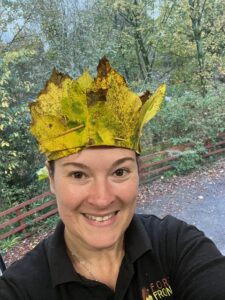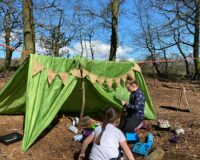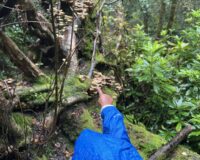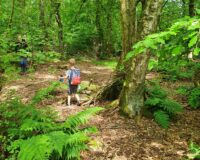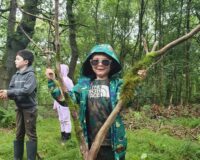As a trainee Play Therapist, I’ve been deeply inspired by the way children express themselves and process their emotions through play. In my clinical hours, I’ve had the opportunity to work in both traditional therapy rooms and outdoor sheds—spaces that offer their own unique challenges and advantages. However, something that has always pulled at my heart is the idea of taking therapy outdoors, into the natural world.
Nature has always been a source of clarity and calm for me, and I believe it holds an incredible potential for enhancing the therapeutic process. But what would it look like if we could bring therapy beyond the walls of a room and into the great outdoors? What impact might nature have on a child’s healing journey, and how could it change the way play therapy unfolds? These are the questions that have been swirling in my mind throughout my training.
Play Therapy Inside: The Traditional Setting
In the traditional setting, play therapy typically happens indoors, where children are provided with a range of toys, art materials, and creative outlets to help them express their thoughts, feelings, and experiences. In these environments, play is a safe space for children to work through their emotions, using objects like dolls, puppets, or even sand to recreate and process real-life situations.
In my experience, the therapy room has its own unique role. It’s a controlled environment where children can feel safe to explore their inner worlds. But, I’ve also noticed a certain limitation in being confined to a room. Sometimes, I find myself wondering, “How might these children respond to being outdoors? How might the natural world influence their process?”
Play Therapy Outside: Nature as a Healing Partner
Over the course of my clinical hours, I’ve worked in rooms, some without windows, and in outdoor sheds. And although these indoor spaces serve a purpose, I’ve felt a strong pull to take my sessions outside, to allow children to experience therapy in an environment that feels more open, alive, and expansive. Nature has a unique ability to ground us and open our senses in ways that an indoor environment can’t.
1. The Pull to Nature
Being inside, I’ve found myself questioning whether the elements—wind, rain, or even the changing light—would impact the child’s process. Could the outdoors bring a new dimension to their therapeutic experience? I often wonder, “How would they react when they step outside, away from the constraints of a room and into the freedom of nature?” The outdoors offers so much more: textures to explore, sounds to listen to, and a living, breathing environment to engage with. These elements could be key in encouraging children to be more open and free with their play.
2. Confidentiality in Nature
Of course, working outdoors comes with its own set of challenges. A major concern I’ve grappled with is how to ensure confidentiality in outdoor spaces, particularly when many classrooms overlook the outside areas where therapy might take place. It’s a delicate balance—creating a space that feels safe and private for the child while being in a public or shared environment. How can I make sure that the outdoors doesn’t compromise the trust between the child and therapist? These are the logistical hurdles that I’m still exploring, but I am confident that the right outdoor setup, even in shared spaces, can create the privacy needed for therapeutic work.
3. Changing Dynamics of Play in Nature
Another question I’ve asked myself is whether being outdoors would change the child’s interaction with the play kit. In a traditional room, we can carefully observe how children engage with specific toys or materials. But when taken outside, I wonder: will the play kit still hold the same meaning? Could the natural world—the trees, rocks, and flowing water—become the materials for their play? What role do the elements and the natural environment play in how they express their emotions and thoughts?
In some ways, I believe nature might open up more opportunities for open-ended play. Natural resources—like sticks, leaves, and mud—offer an invitation for children to explore, create, and imagine. Nature encourages play without limitations, offering endless possibilities for self-expression and discovery.
4. The Impact of Seasons
One important factor I’ve reflected on is how the changing seasons might influence the therapy process. A rainy day might bring a feeling of closeness and introspection, while a sunny afternoon might encourage more lively play. In my experience, each season has its own character and energy, which can influence how children approach therapy. The changing environment can mirror the emotional processes the children are going through, providing a deeper layer of healing and reflection
The Future of Play Therapy in Nature
Despite these challenges, I am increasingly convinced that integrating nature into play therapy could enhance the therapeutic process. Nature offers a world of sensory experiences that can deepen the child’s connection to themselves, to their feelings, and to the environment around them. Through outdoor play, children can engage in real-time emotional processing, while the physical freedom of nature can help them feel more grounded and connected.
Imagine a future where play therapy sessions are not confined to the walls of a room but unfold in the open air, with nature as a partner in the process. This might mean children using the world around them as the canvas for their stories, engaging with the natural environment in ways that speak to their hearts and minds. I see a future where therapists and children can step into the forest, onto the beach, or into a meadow, using the outdoors as both a metaphor and a medium for healing.
Conclusion ✨
While there are certainly challenges to moving play therapy outside—issues of confidentiality, changing play dynamics, and environmental factors—I believe the benefits far outweigh the obstacles. Nature offers a unique and profound space for healing, and I feel strongly that the therapeutic process will be enhanced when we embrace the outdoors. With natural resources fostering open-ended, creative play, children will have the opportunity to process their emotions in new and transformative ways.
As I continue my journey in play therapy, I look forward to the possibility of creating spaces where children can immerse themselves in nature while healing, growing, and finding their own paths forward. Nature provides a limitless canvas for therapeutic work, offering children the freedom to explore, express, and process their emotions in ways that feel natural, authentic, and deeply connected to the world around them.



